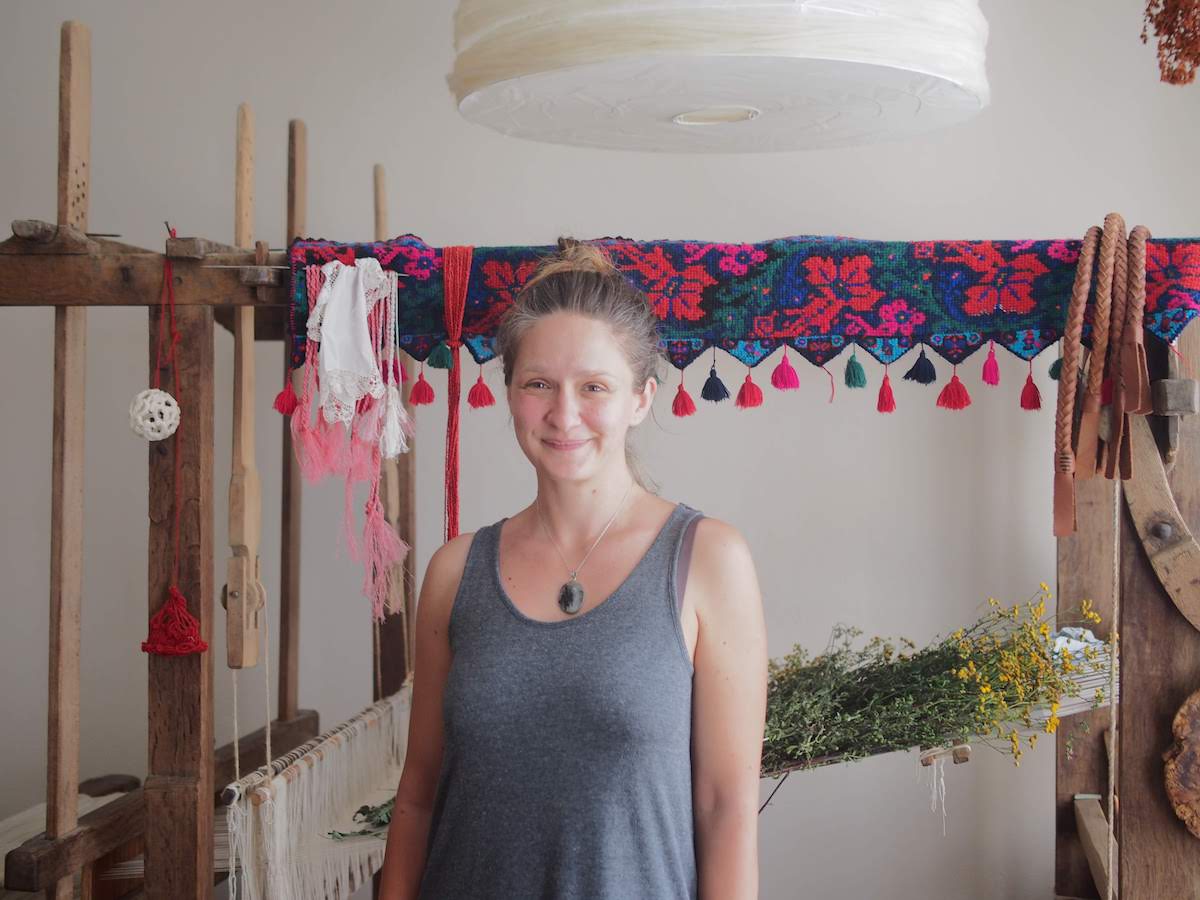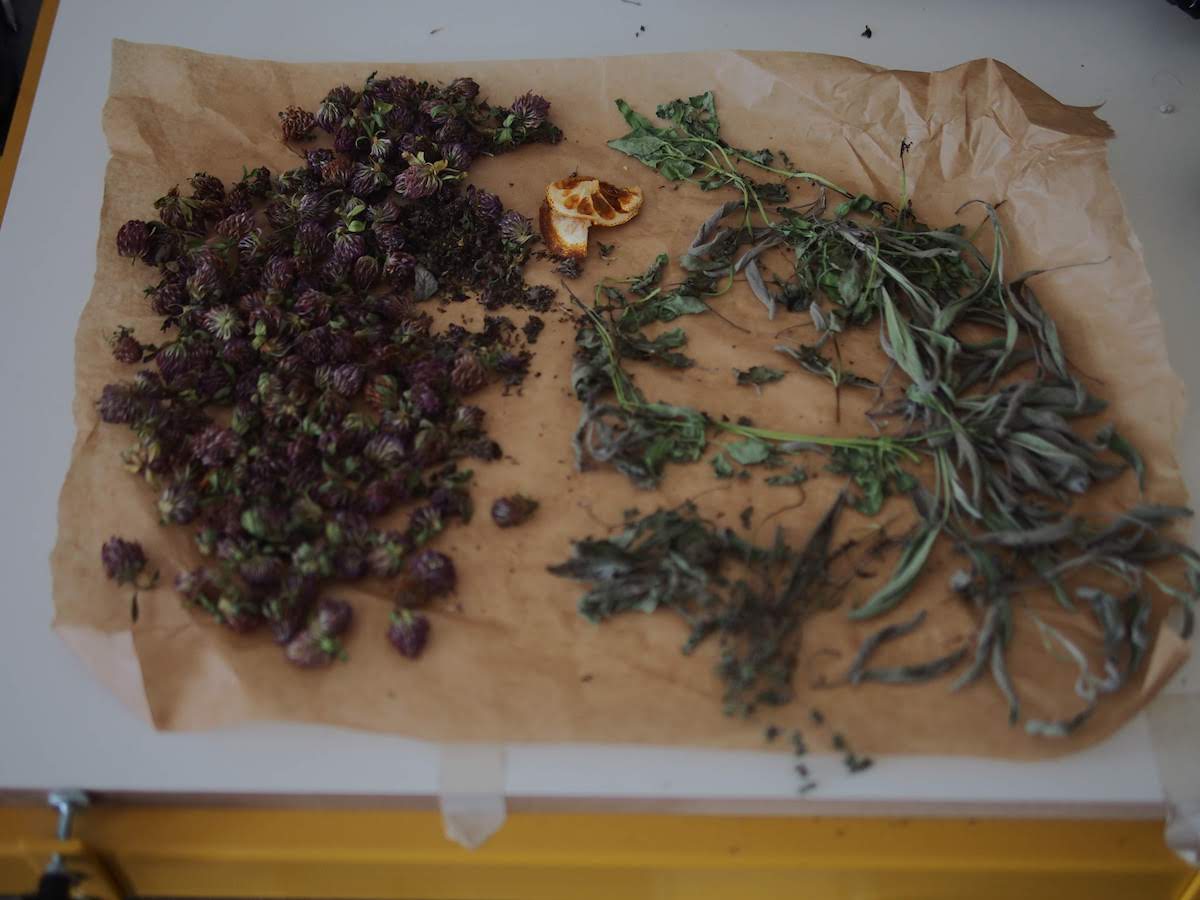The search for silence and roots, in a small Romanian village

The story of two young artists who moved to a village in central Romania to search for their roots and their place in the world, in silence.
Cincu. This small place in central Romania is a world in itself. I arrive there during the village’s fair in August. It’s hot and crowded, kids are running around. You can buy beer, Romanian sausages (mici), balloons, cakes, lemonades, traditional blouses, and straw hats. It seems a bit crazy, but you feel alive. Only a few meters away there is the Saxon fortified church, cool and sumptuous, surrounded by huge trees. It’s a reminiscence of other centuries.
This is the place where Marlene Stanciu and Alex Herberth, two young artists interested in archaic craft techniques, have decided to start a new life.
After driving past a military base which usually hosts NATO drills, then passing by the village church and the fair, I arrive at Marlene and Alex’s house. The village’s sounds are already behind. In the yard, there are some trees and vegetables. A young woman wears a big smile and a long dress as she gets out of the house. A tall guy who wears tattoos and a friendly smile accompanies her. Their dog follows.
This was the house where Marlene would come visit her Saxon grandmother in the summertime as a child. Now it’s the place where she and Alex live, organize their workshops, create furniture and do gardening. Marlene mainly works with textiles, whereas Alex is a skilled carpenter.
It all began with a chair
Marlene moved away from Bucharest five years ago.
“It wasn’t a conscious decision like I’m packing all my bags and I’m now moving to a new place. I was more like a search for silence,” says Marlene.
She first decided to spend a summer in Cincu. Her grandmother’s house was already empty. The young woman found so much silence here that she decided to stay for good. It was the familiarity of the village that helped her settle in. After spending so many holidays here, she had grown accustomed to the place and the people.
It was also a personal search related to her profession, as she wanted to build things on her own and give up a 9 am to 5 pm job. It wasn’t without fear. She wasn’t sure how she’d be able to make a living. At that point, she had already founded the KraftMade project and the Soxen association. Their aim was to promote the immaterial heritage and the traditions of the Transylvanian Saxons.
 “These existential questions that you have when you turn 30 took me back to Cincu,” Marlene says laughing. “Which are my roots, who am I?” She also wanted to understand why the Saxon culture is dying out and what has been left behind, and to see if traditional culture can be relevant for modern design.
“These existential questions that you have when you turn 30 took me back to Cincu,” Marlene says laughing. “Which are my roots, who am I?” She also wanted to understand why the Saxon culture is dying out and what has been left behind, and to see if traditional culture can be relevant for modern design.
Alex was born in Brasov, but his parents moved to Germany at the beginning of the 90s. It was part of a large migration wave when many Transylvanian Saxons left the country. He was seven when that happened but still remembers that he didn’t want to leave Brasov.
“Who would want to leave Brasov?” he says laughing.
They first started a professional collaboration, which eventually led to a life shared. Marlene was searching for people who do woodworking, while Alex was searching for a collaborator in Romania. He had been planning to return to Transylvania. They first worked on a chair, which was displayed at the Romanian Design Week last year.
At the workshops they now organize in Cincu, the two talk about the importance of integrating a cultural narrative into design. They teach people how to document “the soul of a place” and understand what are the specific resources in a certain place. It’s a way of seeing craft as a survival strategy, Marlene explains. Craftsmen were obliged to use the resources of a certain place in a sustainable way so that their children and grandchildren would be able to continue using them.
This is an important lesson in a society driven by crazy consumption, where even cultural production often bends to the same rules.
When nature calls
On a normal day, Marlene and Alex wake up at around 7 AM. Besides the actual design work, they have to deal with papers, emails, and other administrative stuff. They also take care of the garden.
“In the morning we are project managers, but in the afternoon we turn into wine growers,” Marlene says laughing. “When nature is calling, you have to be there.”
They are also constantly refurbishing the old house. On the long term, they want to extend the house to be able to organize artist residencies there.
 Drying out plants for tea
Drying out plants for teaThe challenges of moving to the countryside were different for each them. Marlene had to get used to physical work, to deal with insects and how to manage remote communication with customers. Alex found it more difficult to adapt to the local work style. He says that you can’t always rely on people, even if you made plans with them.
“I learned to give up some things and to cherish others,” the young woman says.
How else did their life change after moving to the village?
“I think I have much more peace. The time goes by differently,” Marlene says. Two years ago she learned how to weave, and this has become an important part of her work. “In Bucharest, I wouldn’t have found the mood or the necessary silence to do that.”
Marlene also feels that she’s a much healthier person. She didn’t need to see a doctor in the last five years.
Apples instead of popcorn
I first visited them in August, two days after the diaspora protest in Bucharest which ended with police violence. The second conversation took place in September, shortly after the referendum to change the marriage’s definition in the Romanian Constitution had been announced.
“It gives you distance,” says Marlene about living in a remote village. “Being here means that you’re not confronted with all this on a daily basis. And you understand that it’s up to you to do something. We are trying to produce change in different ways: by working with young people, talking to our neighbours.”
Are they worried about missing important events? No way, says Alex. There are so many things happening here, adds Marlene. Some of their friends have organised this summer a movie projection in a shed in Somartin, a nearby village. Instead of popcorn, they offered apples. Some of the local kids had never been to a cinema until then.
In Cincu and the surrounding villages, Marlene and Alex are part of a larger community of people not only from Romania, but also from Switzerland, France, the Netherlands or Sweden, who have moved here to pursue their dream. “They have all come with a dream,” says Marlene. “They are people who have understood the value of a place and want to tell the world about it.”
By Diana Mesesan, diana@romania-insider.com
Photos by Diana Mesesan












